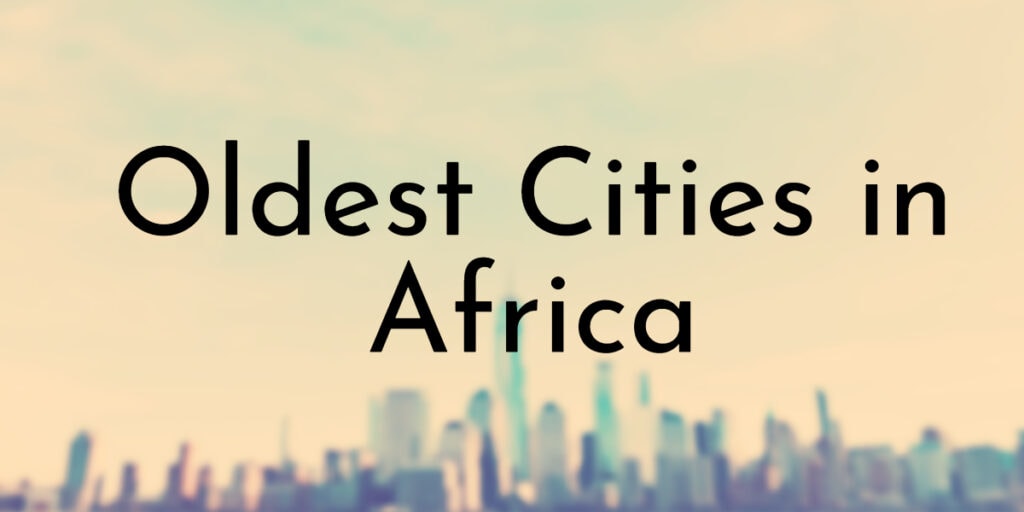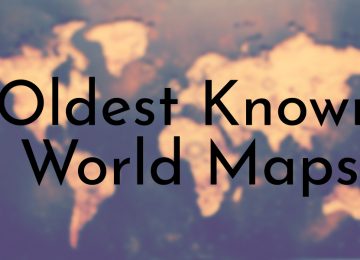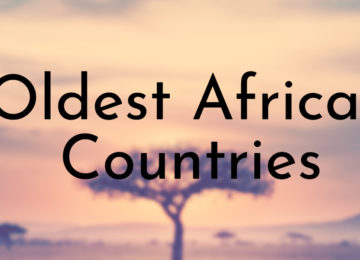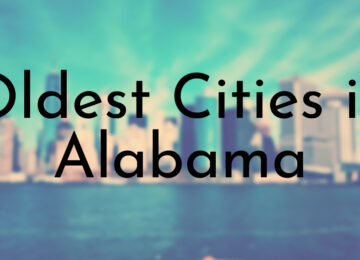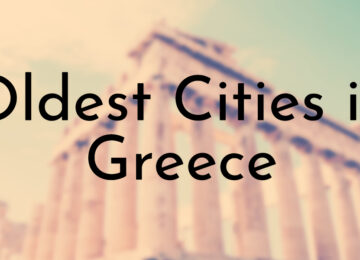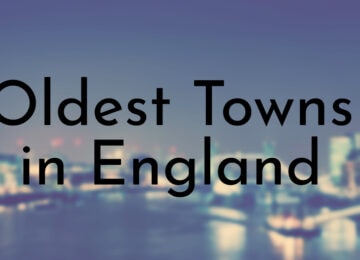Africa has a rich and diverse history, and many of its oldest cities have stood the test of time, having been inhabited for centuries. From the ancient trading cities of North Africa to the bustling metropolises of the south, the 10 oldest cities in Africa are a testament to the continent’s resilience and vibrancy.
From the oldest city in Africa, Faiyum, which dates back to around 2181 BCE, to the beautiful port city of Mogadishu, which has been around since 200 BCE, these cities have each seen the rise and fall of empires and have been witness to the changing of times.
Their ancient walls and monuments stand as a reminder of Africa’s long and varied history, of the many cultures that have come and gone, and of the people who have made them what they are today.
10. Mogadishu (Somalia)
Year Founded: c. 200 BCE
Area: 637 sq. km.
Elevation: 95.14 ft.
Population: 4,249,083 (2023)
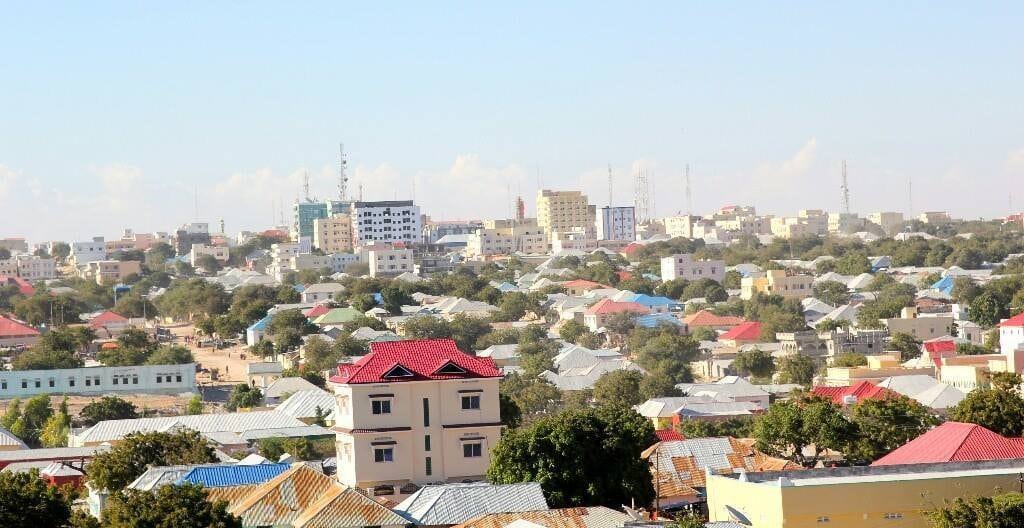
Mogadishu is Somalia’s capital and largest city, located on the Indian Ocean coast. The city has a rich cultural heritage and has been inhabited for thousands of years, with evidence of trade and commerce in the region dating back to ancient times. Mogadishu has a long and complex history, having been a center of trade and commerce for many centuries.
The city has also been the center of several powerful kingdoms and empires over the centuries, including the Ajuran Sultanate and the Somali Sultanate.
In recent decades, Mogadishu has faced significant challenges due to regional conflict and instability. Despite this, the city is home to a resilient and proud population working to rebuild and restore the city to its former glory.
Did You Know?
Mogadishu is also known as “Xamar” and “Hamar.”
9. Alexandria (Egypt)
Year Founded: 332 BCE
Area: 1,661 sq. km.
Elevation: 75 ft.
Population: 5,588,000 (2023)
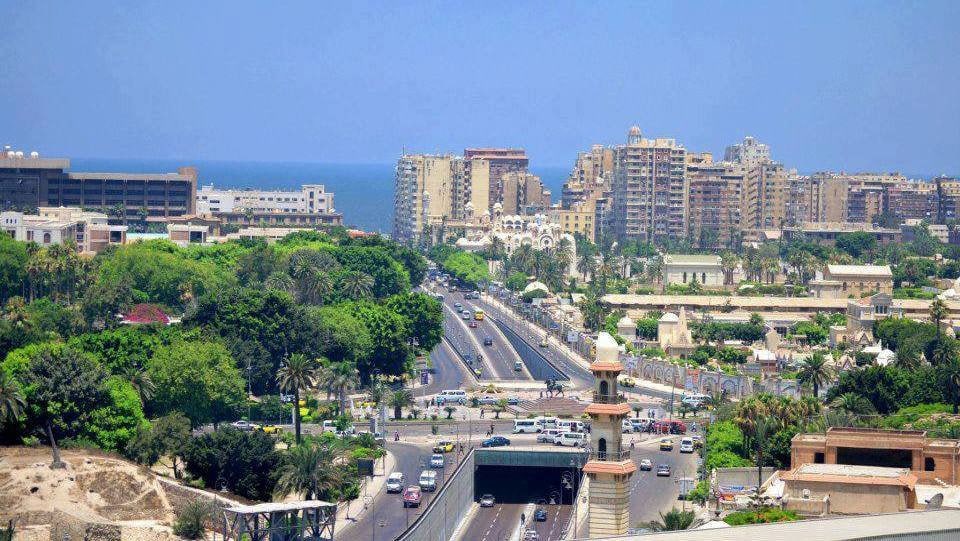
Alexandria, a city on the Mediterranean coast of Egypt, was established by Alexander the Great in 331 BCE and quickly became a significant city in the ancient world. It was renowned for its cultural scene and library, considered one of the most important cultural institutions of its time. Notable scholars such as Euclid and Hipparchus lived in Alexandria.
Although much of its ancient past has been lost, Alexandria remains a significant city with over 4 million inhabitants and is a major cultural and economic center in Egypt. Alexandria’s rich history and cultural heritage make it a source of pride for Egyptians and a must-visit destination for those interested in exploring its past, enjoying its unique atmosphere, or simply admiring its architecture.
Did You Know?
Tourist attractions in this city include the Qaitbay Citadel, built on the site of the ancient Pharos lighthouse, and the city’s lively café culture.
8. Mendefera (Eritrea)
Year Founded: c. 500 BCE
Area: 496 sq. km.
Elevation: 6,463.25 ft.
Population: 28,492
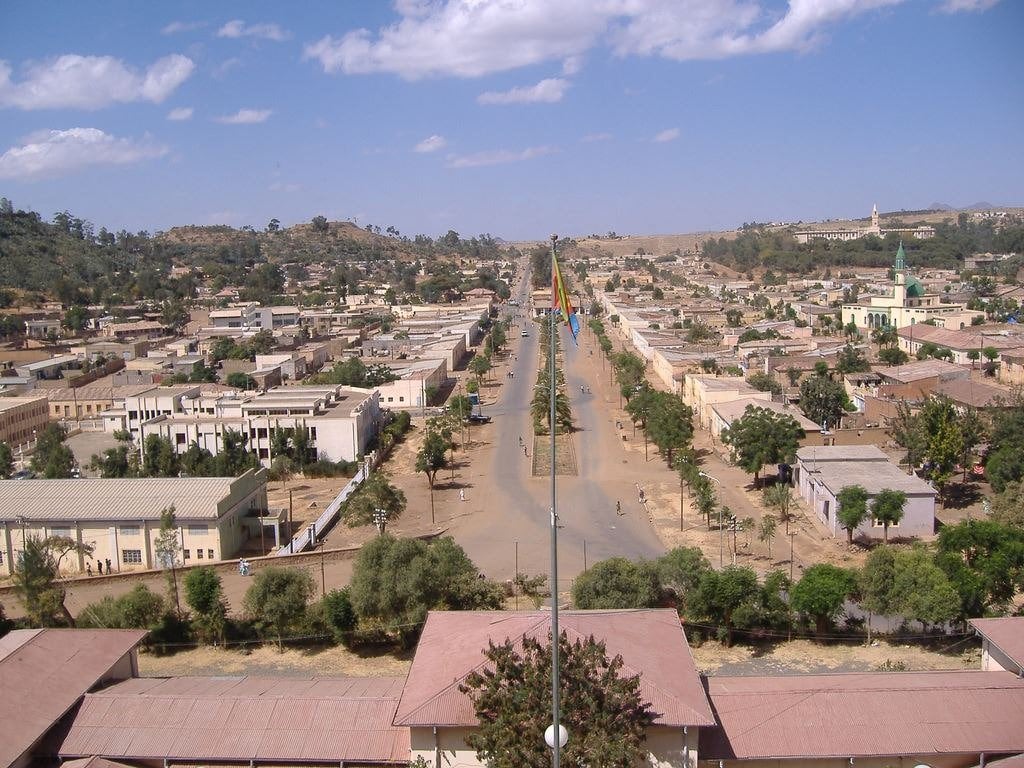
Mendefera, located in the central Eritrea region, is a great important city, serving as a hub for transportation and economic activity. Its rich cultural heritage can be traced back to ancient times, and the city boasts several historic landmarks, including the remains of old churches and monasteries.
In addition to its cultural significance, Mendefera is known for its scenic beauty, with several parks and natural attractions in the surrounding area. Furthermore, the city provides a harmonious blend of contemporary and traditional cultures, making it a desirable destination for travelers and tourists alike.
Did You Know?
Despite its significance, Mendefera has remained relatively unknown on the international tourism circuit. This, in turn, presents an opportunity for visitors to discover the city’s rich history and cultural heritage and enjoy the beauty of its natural surroundings.
7. Benghazi (Libya)
Year Founded: c. 525 BCE
Area: 314 sq. km.
Elevation: 75 ft.
Population: 650,000 (2023)
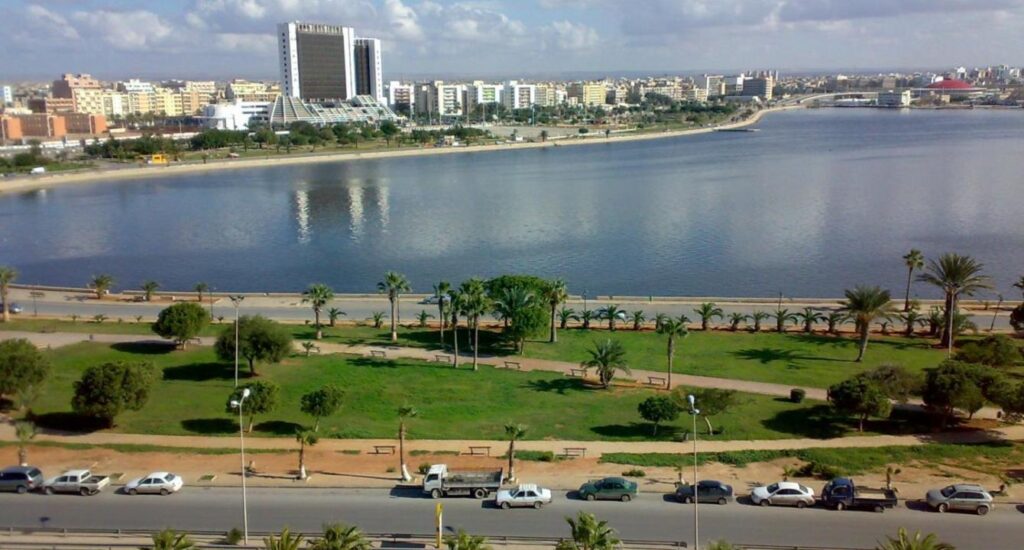
Benghazi has a rich history, ruled by various civilizations such as the Phoenicians, Greeks, Romans, and Ottomans. In 2011, Benghazi was at the forefront of the popular uprising against the regime of former Libyan leader Muammar Gaddafi, and the city played a vital role in the subsequent civil war.
In the aftermath of Gaddafi’s fall, the city has struggled with ongoing conflict and insecurity, with various armed groups vying for control.
This has resulted in frequent violence and instability, as well as the displacement of many residents. Despite these challenges, Benghazi remains an important city for Libya and has a significant cultural and historical heritage. The city is home to several museums, parks, and other cultural institutions, and it is also a popular tourist destination for those interested in exploring Libya’s rich history.
Did You Know?
It was a major trading center for the Ottoman Empire and was an important center for the Italian colonial government in Libya.
6. Constantine (Algeria)
Year Founded: c. 600 BCE
Area: 231.6 sq. km.
Elevation: 2,100 ft.
Population: 418,000 (2023)
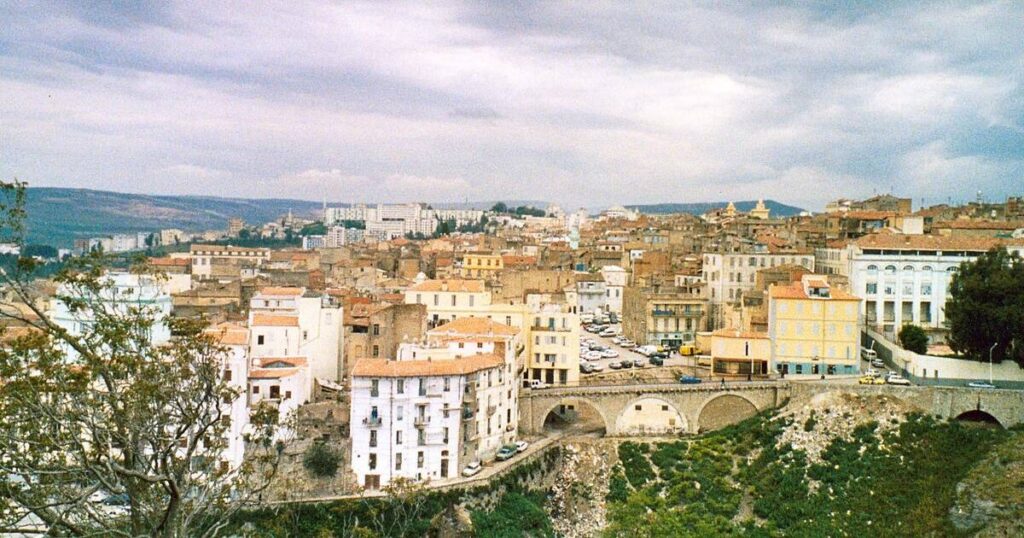
Constantine, located in northeastern Algeria, is the country’s third-largest city and is known for its striking natural beauty. Dubbed the “City of Bridges” due to the numerous bridges spanning the valleys and gorges surrounding the city, Constantine has a long history as a cultural and economic hub, playing a significant role in trade, education, and government.
The city boasts a rich cultural heritage, with historic sites, museums, and landmarks showcasing its history. Despite facing poverty, unemployment, and social and political instability, Constantine remains an attractive destination for its natural beauty and rich cultural heritage.
Did You Know?
The government is actively working to improve the city’s infrastructure and attract investment.
5. Aswan (Egypt)
Year Founded: c. 650 BCE
Area: 34,608 sq. km.
Elevation: 354 ft.
Population: 365,000 (2023)
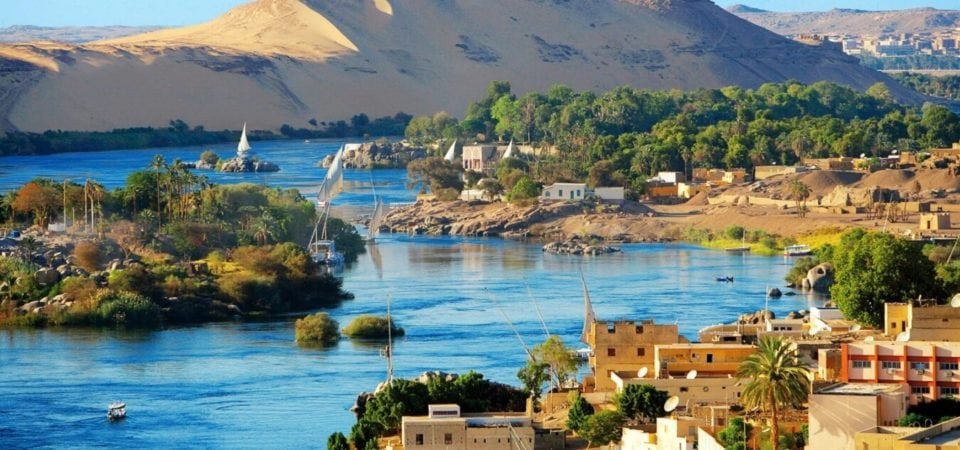
Aswan is a city in southern Egypt and is considered the sunniest inhabited place in the country. It is located on the east bank of the Nile River and is a popular tourist destination for its warm weather, ancient history, and beautiful natural scenery. Today, Aswan is a bustling city with a vibrant market and is known for its traditional Nubian culture, which is distinct from the rest of Egypt.
The city is also an important economic center, with a significant agricultural and fishing industry. Despite its many attractions, Aswan faces challenges, including poverty and limited development, particularly in rural areas. Despite these challenges, Aswan remains a popular destination for tourists and an important city for Egypt.
Did You Know?
The city is home to several ancient sites and monuments, including the Temple of Philae and the Aswan High Dam, which was built in the 1960s to control the flooding of the Nile River.
4. Zeila (Somalia)
Year Founded: c. 700 BC
Area: Unspecified
Elevation: 13.12 ft.
Population: 18,600 (2012)
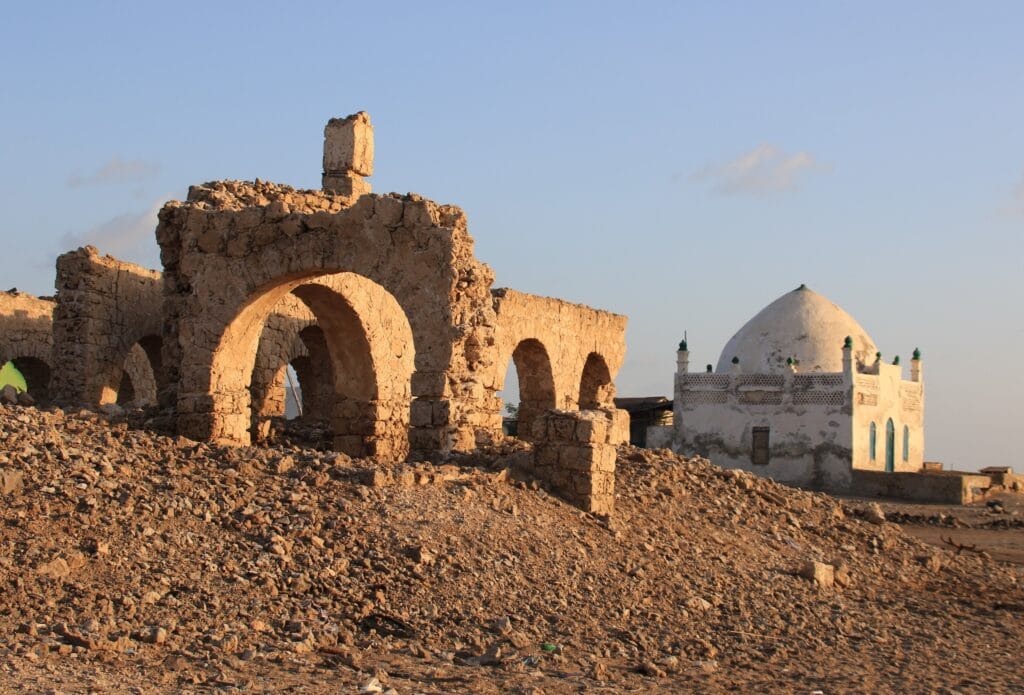
Zeila, located in northwestern Somalia and serving as the capital of the self-declared state of Somaliland, is a historic port city on the Gulf of Aden. With a rich cultural and historical heritage dating back thousands of years, Zeila was once a major center of trade and commerce during the medieval period and an important hub for the trans-Saharan trade routes.
Despite facing political instability, poverty, and conflict, Zeila is home to a vibrant community with a strong cultural identity. In addition, it is known for its natural beauty, including nearby beaches and forests. While its future is uncertain, Zeila remains a significant part of Somalia’s cultural and historical heritage and a tourist destination.
Did You Know?
The city was also an important hub for the trans-Saharan trade routes and connected the region with the wider world.
3. Tangier (Morocco)
Year Founded: c. 800 BCE
Area: 116 sq. km.
Elevation: 750 ft.
Population: 1,314,000 (2023)
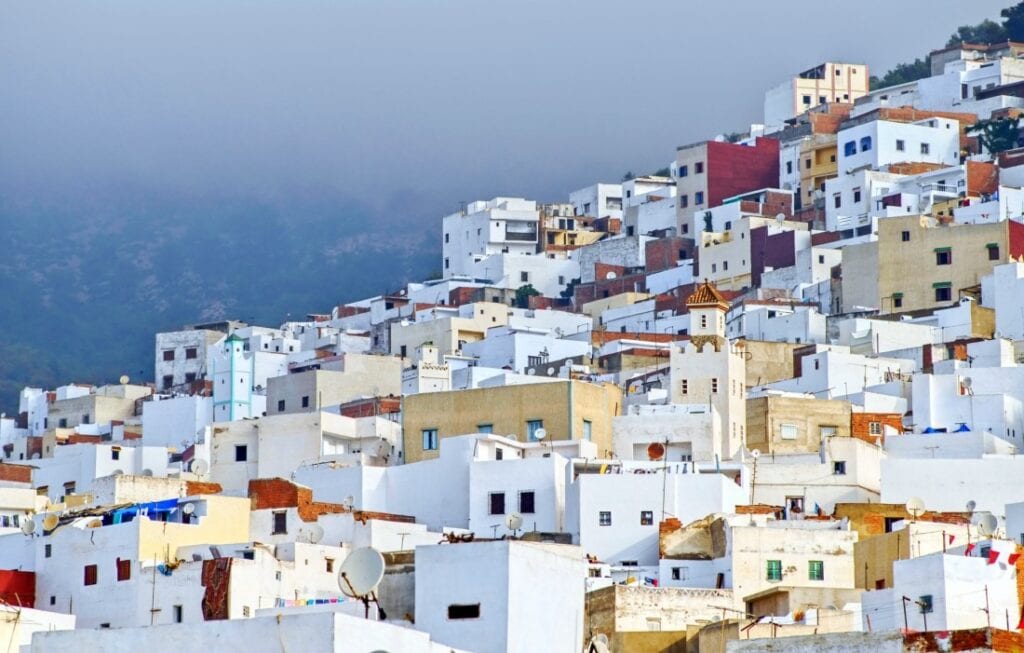
Tangier is a city in northern Morocco that has established itself as a popular tourist destination, renowned for its rich history, stunning beaches, and vibrant culture. With influences from a diverse array of civilizations, including Berber, Phoenician, Roman, and Arab, Tangier boasts a rich cultural heritage.
The city is also celebrated for its rich cultural heritage, with numerous historical sites, museums, and landmarks available for visitors to explore and appreciate its history.
In addition to its cultural offerings, Tangier is renowned for its breathtaking beaches and natural beauty, making it a highly sought-after tourist destination for those seeking to bask in the sun, sea, and sand.
Although Tangier continues to face challenges such as poverty, unemployment, and inadequate infrastructure in certain areas, the city remains a popular tourist destination and an important city for Morocco.
Did You Know?
The city was ruled by the Romans and the Arabs and became a central hub for commerce, culture, and politics during the colonial period.
2. Luxor (Egypt)
Year Founded: c. 2150 BCE
Area: 416 sq. km.
Elevation: 256 ft.
Population: 487,896 (2023)
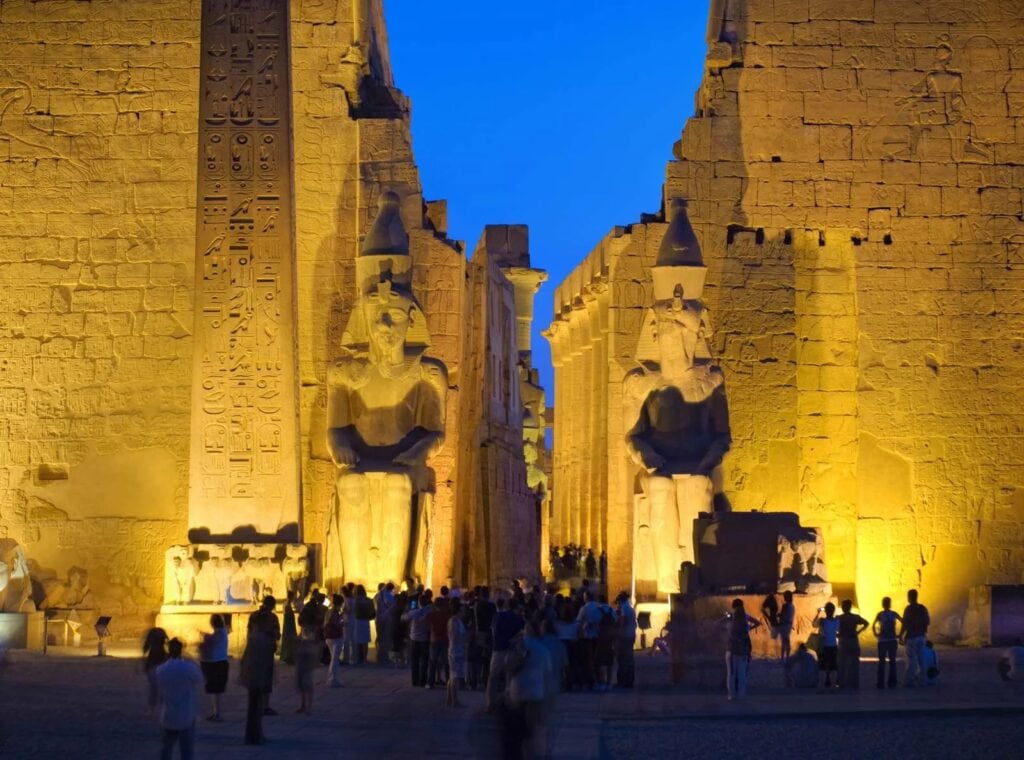
Luxor, situated in southern Egypt, is a famous tourist destination for its abundant history and ancient structures. It was the site of numerous renowned monuments and temples, including the Luxor Temple, the Karnak Temple, and the Valley of the Kings, where the tombs of many famous pharaohs can be found.
Millions of tourists visit these ancient ruins and monuments annually; they are considered some of the most significant archaeological sites globally. In addition to its historical significance, Luxor boasts a thriving culture and modern facilities.
The city’s tourism industry continues to grow, attracting visitors from all over the world seeking to experience Egypt’s rich history and culture.
Did You Know?
Once known as Thebes, Luxor was a major city in the ancient world and was a hub for religion, politics, and culture.
1. Faiyum (Egypt)
Year Founded: c. 2181 BCE
Area: 23.87 sq. km.
Elevation: 75 ft.
Population: 433,000 (2023)
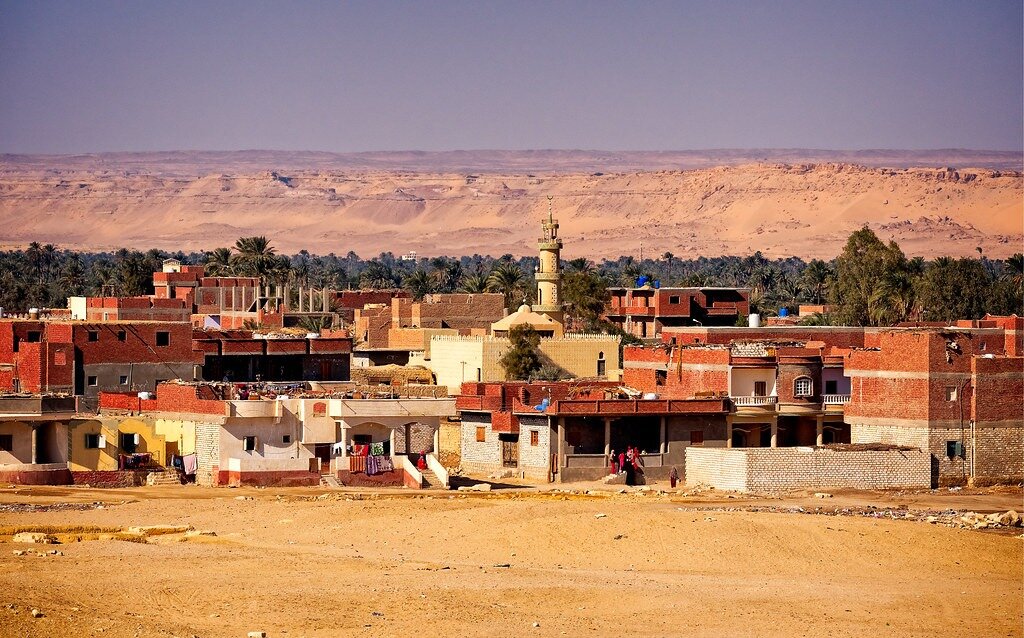
Faiyum, located approximately 100 kilometers southwest of Cairo, is a historical city within the Faiyum Oasis in Egypt. It is considered the oldest continuously inhabited city in Africa and boasts a rich history dating back to ancient times.
Faiyum was an important center for religion, politics, and commerce and was known for its numerous temples and monuments, including the Temple of Sobek and the Temple of Hathor.
Additionally, Faiyum was renowned for its agriculture, boasting fertile lands utilized for crop cultivation and food production for the surrounding areas. Faiyum is a modern city with a growing population and a robust agriculture industry. It is also a sought-after tourist destination, renowned for its rich history, cultural offerings, and natural beauty.
Did You Know?
Faiyum is also known for its traditional handicrafts, including pottery, weaving, and basket making. These crafts are a unique expression of the city’s cultural heritage and are an important part of life in Faiyum today.


